Japanese
Sustainable living in Tokyo
Hot Composting at Home with Komenuka
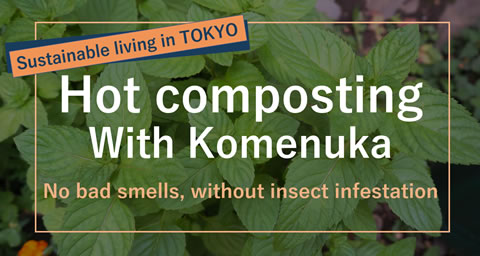
Why not try making compost in a cardboard box with Komenuka? It is easy and fun! Compost-making can reduce kitchen waste at home and give a chance to grow plants bringing more greenery to town. Here is my experience of compost-making in that way, without bad smells and with no insect trouble.
My compost-making at home
The recent garbage problem in Tokyo is getting more people's attention to compost-making at home. However, many people seem hesitant to take action despite their interest because of the concern about bad smells and annoying bugs coming up. Actually, I used to be one of those just before learning about easy-to-start hot composting. This composting is so simple and suitable in a small space like a balcony that I decided to enjoy and continue it in my style here.
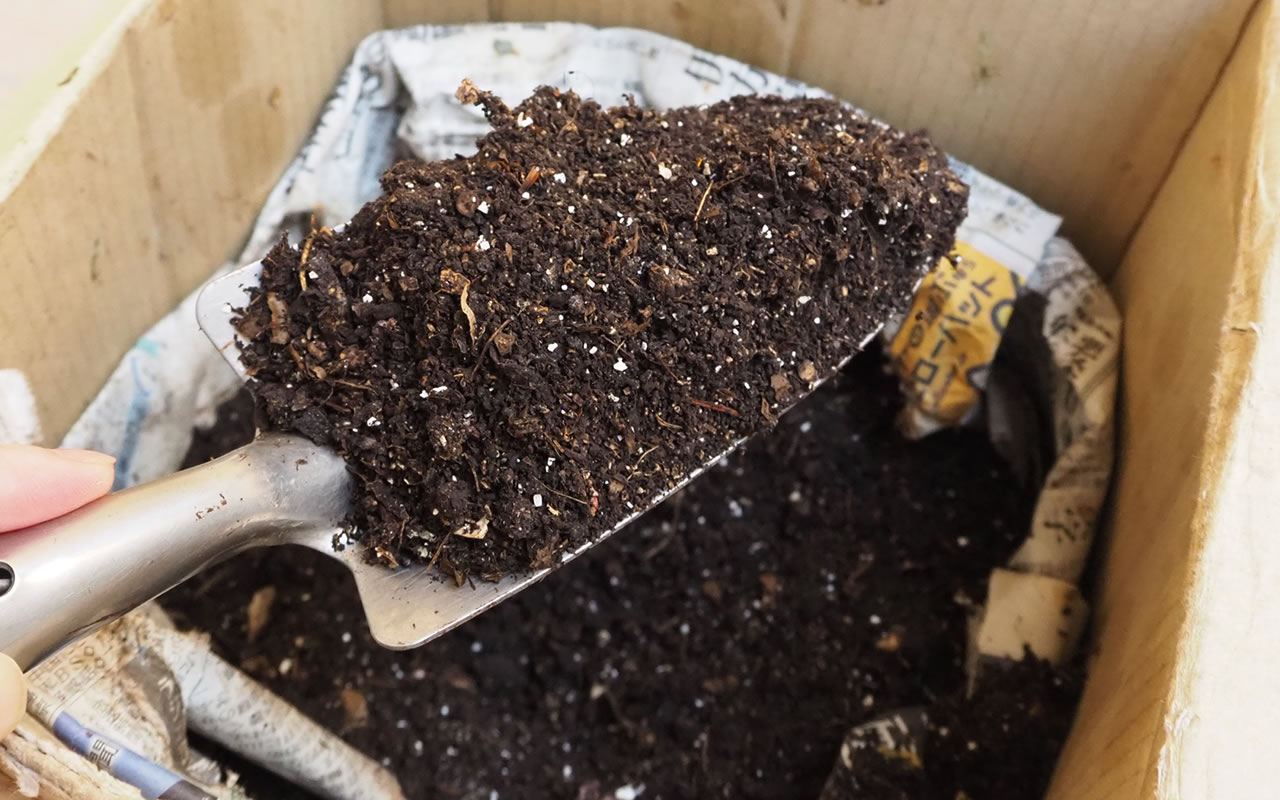
The compost I made in a cardboard box. Kitchen scraps turned into compost.
What composting brings
Compost, or "Taihi" in Japanese, is made from natural waste, such as kitchen scraps decomposed by microorganisms or earthworms. For home composting, the waste is kept in a small container during the decomposition, where it gradually turns into soil-like compost. Composting at home in a residential area can help reduce garbage in town, and lesser garbage also make people easier to dispose of. Furthermore, it will be good to reuse natural waste for growing flowers and vegetables at home. Hopefully, growing veggies at home will lead to some money-saving for food.

Shiso, Goya, and Shishito grown by use of compost.
Composting in a cardboard box
Compost-making at home is usually done in one of two ways: fermentation by microorganisms and worm decomposition, and the container to use is chosen from cardboard boxes, wooden boxes, and plastic containers. The choice here is fermentation by microorganisms in a cardboard box, using Komenuka that helps microbial activity. Both cardboard boxes and Komenuka are easy to get in Tokyo, usually sold in a supermarket or home development store, and don't cost much.
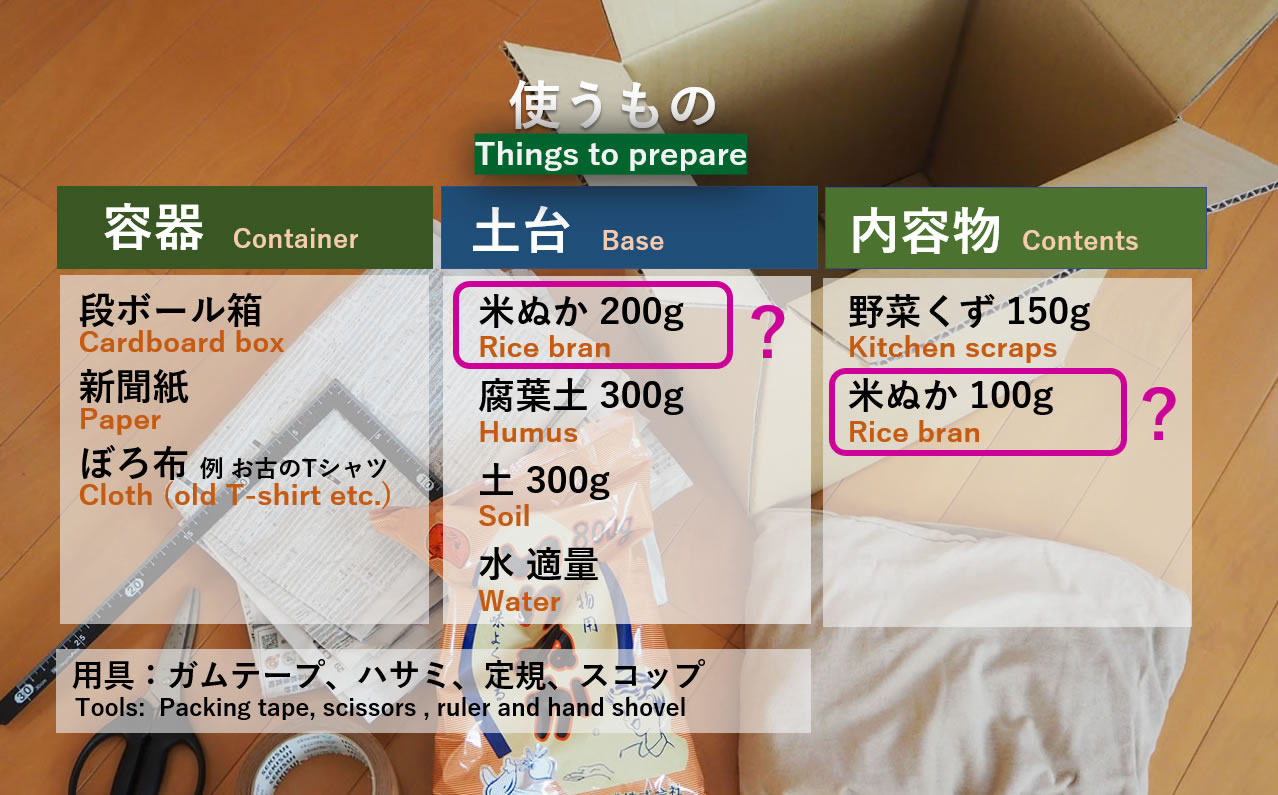
What’s Komenuka?
Komenuka is rice bran that contains hulls, seed coats, and rice germs. The Komenuka is rich in nutrients enhances the microbial activity of yeast and lactic acid bacteria. Being used as an ingredient to make Japanese pickles, Komenuka is often sold in supermarkets.
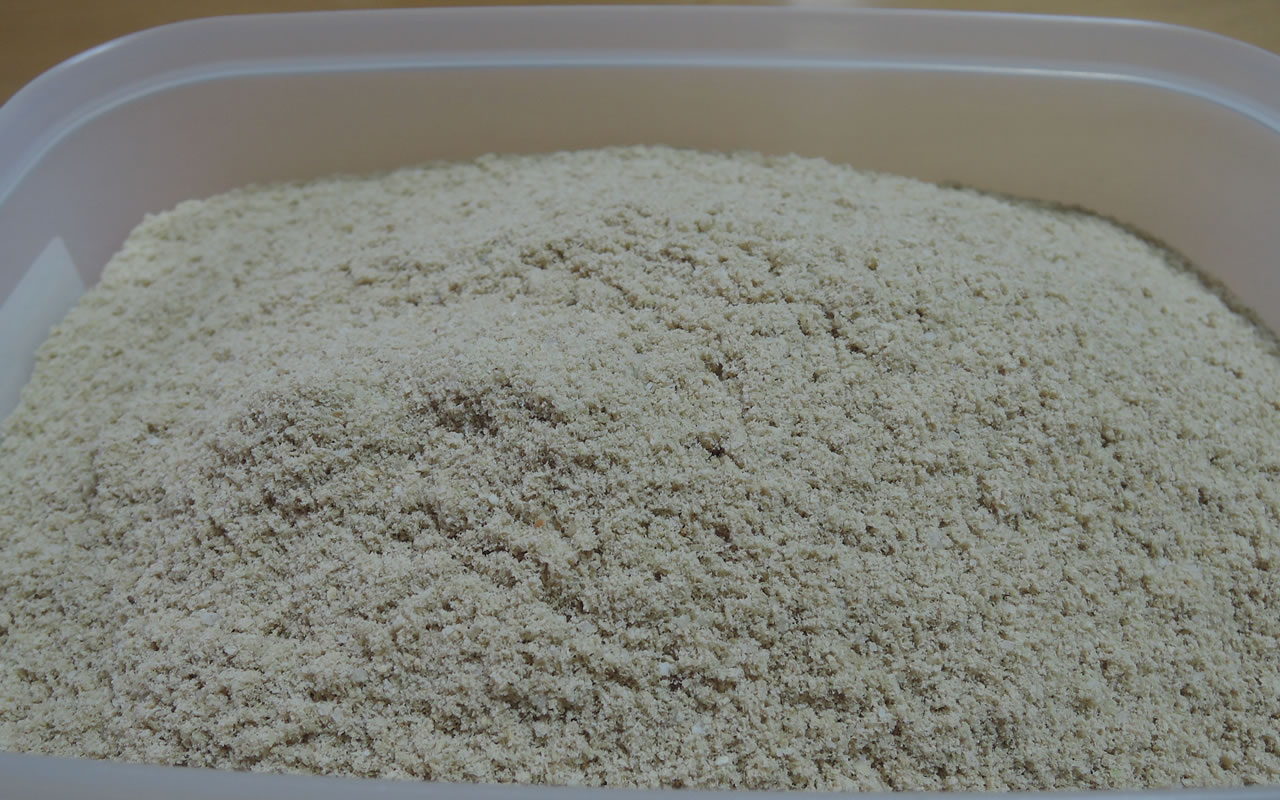
Komenuka
The use of Komenuka at the beginning of composting can remarkably accelerate decomposition. By mixing Komenuka with humus, soil, and little water, you can make the "base material" to lay inside the cardboard box. Once the composting box is prepared, you can start putting kitchen waste in it.。
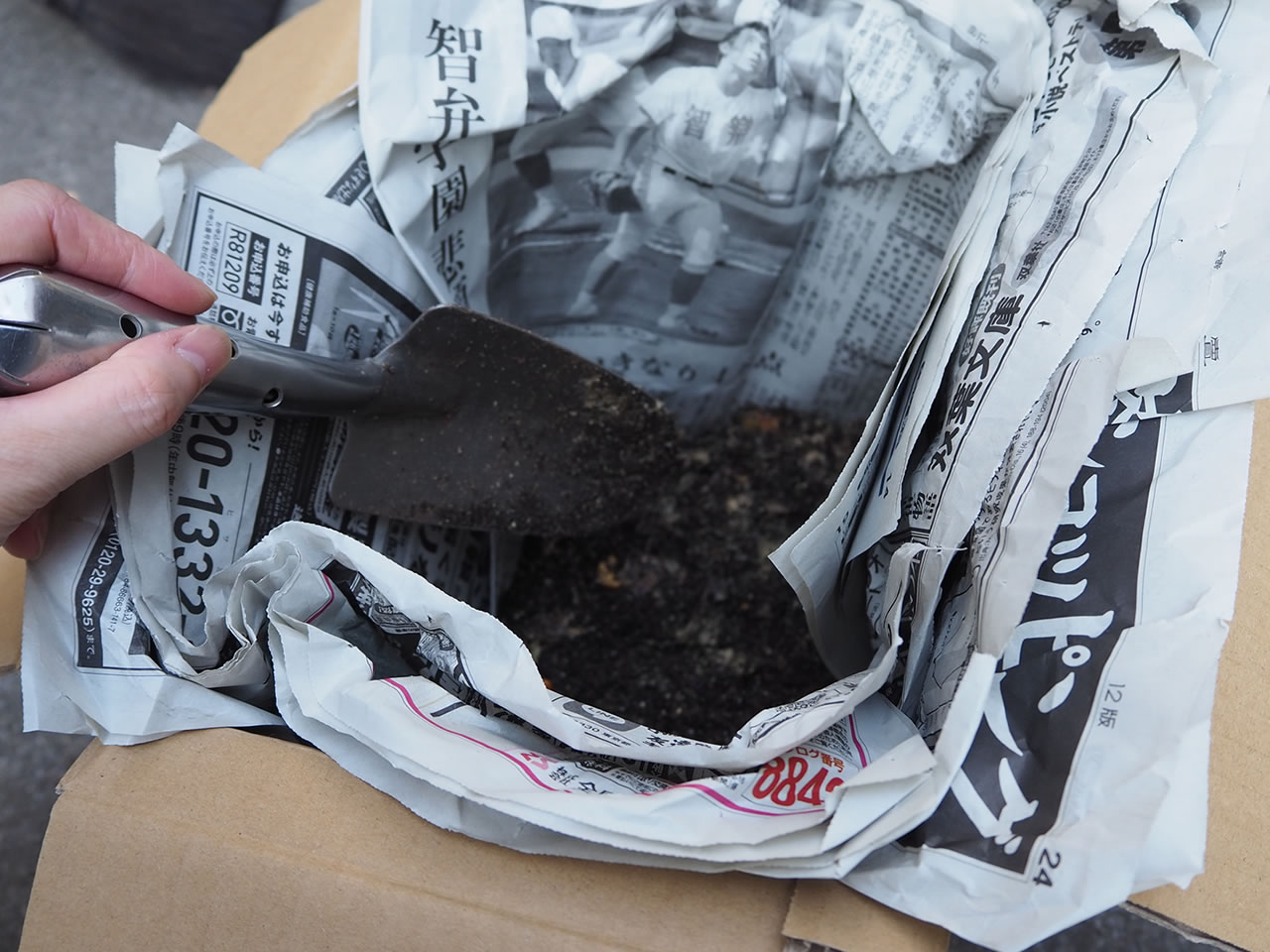
A cardboard box with paper inside at the bottom. The base material includes humus mold, soil Komenuka (at ratio 3:3:2) mixed with water. For the first addition of vegetable scraps, mix them with rice bran.
utting kitchen waste into the box
The waste to put in the box is kitchen scraps, dried to reduce moisture by 50 or 60%. It is not good to put wet scraps that may cause bad smells. In my case, I wrap kitchen waste with paper after I cook supper then leave it to dry at night. It is my routine to put the waste into the box the following morning.
For this box size in the picture, I put scraps about 30g to 100g. It is better not to put too many scraps at once as it slows down decomposition, causing a bad smell. The finer the scraps, the faster they will decompose.
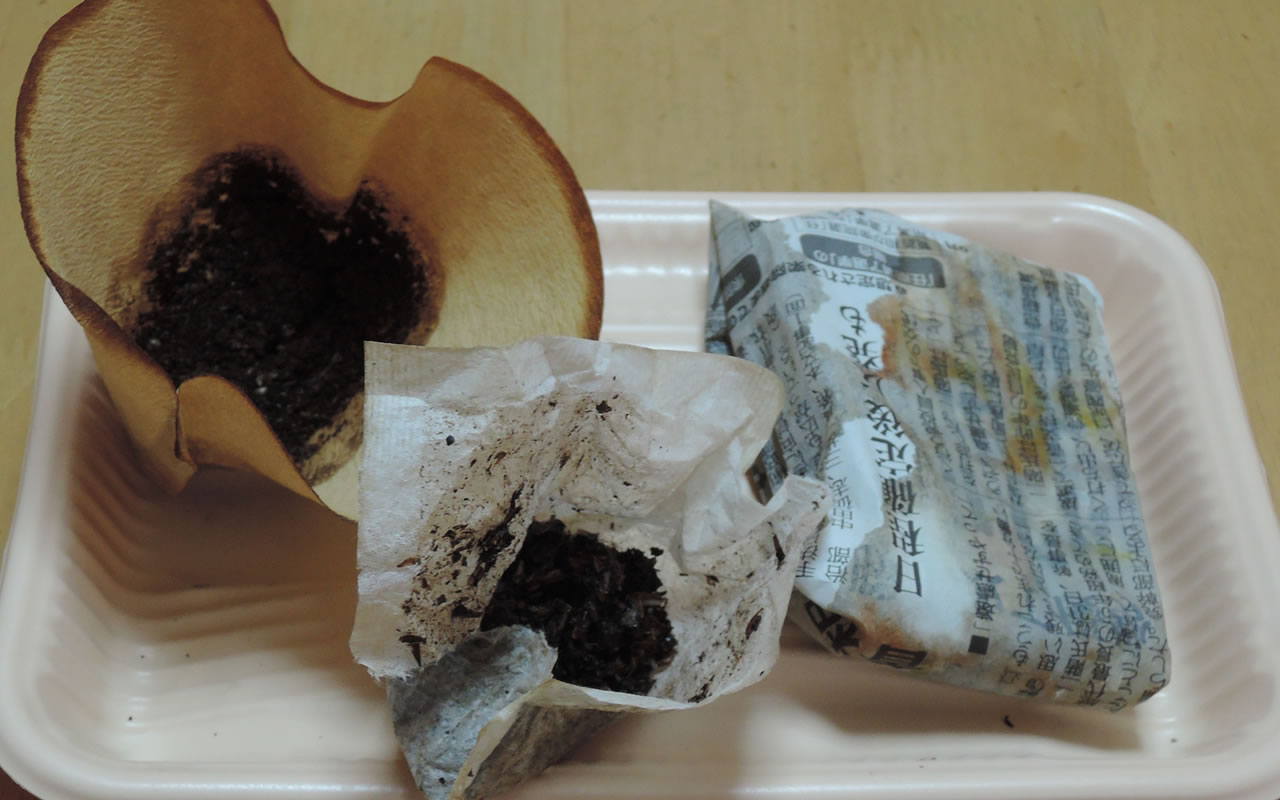
Kitchen scraps - Coffee grounds, tea leaves, and vegetable scraps (green peppers, onion peel, etc.)
What to put /not to put in
Generally, any vegetable and fruit scraps can be put into the composting box. Even the pineapple skins will be discomposed in a few days, depending on the season. Other leftovers, fish bones, used tea leaves, coffee grounds, and small amounts of meat (offal) are also OK to put in. But, hard parts like chicken bones should not be put in because decomposition takes too much time. They are too hard to cut into pieces.


Tips for preventing bad smells and annoying insects
The foul smell and pesky insects are simply avoidable by keeping good decomposition. While being steadily decomposed, waste turns into compost before it gets smelly and insects come up. The point is, to put only finely-cut scraps into the box and mix well with a shovel inside the box to let fresh air in.
For animal food scraps like fish guts that already have a smell, mix them inside to not come out on the surface. Those scraps will disappear within a few days before it starts annoying you. Mixing with a shovel will also prevent the breeding of insects. Under decomposition, the temperature inside can reach even over 50 C, where insects can no longer live.
Enjoy the daily care
To let fresh air in, mix with a shovel inside the box, ideally twice a day in the morning and evening. In the morning, you can do it when you put kitchen waste in the box. In the evening, you may be able to do it as a “pleasure.” At the end of the day, on the day something bad happens, I stir the box in silence and feel comforted by the warmth. It is a kind of soothing, like taking care of a pet, which is how I enjoy home composting.

Since it takes much time before the waste turns into compost completely, I prepare two boxes to dispose of kitchen waste and make compost simultaneously; one is to put the scraps every day, and the other box is to enable complete decomposition. The containers should be at a well-ventilated, ideally a sunny place.

To find more detailed information on making a composting box, daily care, and how to enjoy it, see the video.
Remember, compost “grows” differently by conditions, including the environment, season, and scraps to put in. I hope you enjoy composting in your style.





